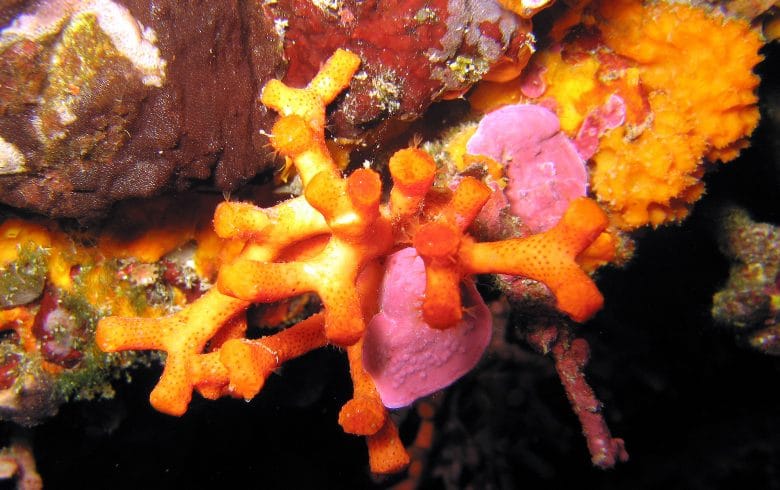
Did you know ?
False coral is a hermaphrodite animal and also reproduces by budding.
False coral is a bryozoa, which are small animals with a crown of hollow tentacles around the mouth and that live in colonies. It secretes a calcium carbonate skeleton which is bushy and orangey-pink and looks like coral. This species can be up to 20cm tall and feeds on small planktonic organisms and organic waste. It is shade-dwelling and hence found in areas of reduced light, such as crevices, vertical walls and rocky overhangs from 10 to 50m deep. It is found in the Mediterranean and the Atlantic.
Phylum: Tentaculata
Class: Bryozoa
Order: Cheilostomatida
Family: Myriaporidae
Scientific name: Myriapora truncata
French: Faux corail
Spanish: Coral falso
Italian: Falso corallo
German: Trugkoralle






















